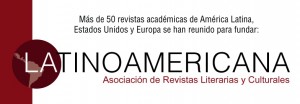Readers, authors and consumers: The feminine uses of the album in Latin America
Abstract
A typical 19th-century album (although still popular during the first decades of the 20th century) consisted of a bound book with blank pages that served as a repository for various collectible objects and writings. There, you could find autographs and manuscripts from the owner’s friends, music sheets, drawings, poems, translations and, over the decades and as technology advanced, it also included photographs, postcards of landmarks and celebrities, newspaper clippings, among other objects. Together, these pieces comprise an attractive intersection of subjects, discourses, habits and traditions that allow us to study the dynamics of socialization and reading practices of that time from a context that is not limited to national life, since the album connected the owner with a cosmopolitan community. With the analysis of the disagreement between Mariano José de Larra’s and Domin- go F. Sarmiento’s opinions on the nature and women’s uses of the album, and with the study of some copies owned by women in and from Latin America, this essay approaches the album as an object that generated new reading practices and socialization dynamics for women, at the same time that it inserted other logics for the production of knowledge throughout the 19th and the first decades of the 20th century. The album allows us to reconsider the predominance of the written word in the studies of 19th and 20th cultures in Latin America, the content and form of our archives, and the incidence of gender relations in the conformation of historical, literary, and consumption accounts in the continent.
References
Alcibíades, Mirla (2012). “Álbum y universo lector fe- menino (Caracas, 1839)”. Orbis Tertius, vol. 17, no. 18, www.orbistertius.unlp. edu.ar/article/view/OTv17n18d04/ 4891.
Antelo, Raúl (2016). “El taller de montaje”. AAVV. Sarmiento. Diez fragmentos comenta- dos. EUFYL, UBA. Buenos Aires. pp. 145-51.
Bourdieu, Pierre (1984). Distinction: A Social Critique of the Judgement of Taste. Harvard UP.
Bustamante, Pancho. “El álbum”. Comunicación personal via email. 11 de marzo de 2019.
de la Maza, Josefina (2013). “Itinerarios de una vida: El álbum de Isidora Zegers de Huneeus”. Álbum de Isidora Zegers de Huneeus. Ediciones de la Dirección de Bibliote- cas, Archivos y Museos. pp. 7-30.
Di Bello, Patrizia (2007). Women’s Albums and Photography in Victorian England: Ladies, Mothers and Flirts. Ashgate.
Garvey, Ellen Gruber (2013). Writing with Scissors: American Scrapbooks from the Civil War to the Harlem Renaissance. Oxford UP.
Fernández Aceves, María Teresa. “Tiempo y memoria: el álbum de autógrafos de Ata- la Apodaca”. Estudios Jalicienses 89, Agosto de 2012, pp. 52-63.
---------- (2010). “El álbum biográfico de Guadalupe Martínez Villanueva: cultura oral y escrita en Guadalajara, 1920-1970”. Cultura Escrita & Sociedad, no. 11, pp. 146-170.
Haraway, Donna. “Situated Knowledges: The Science Question in Feminism and the Privilege of Partial Perspective”. Feminist Studies, vol. 14, no. 3 (Autumn, 1988), pp. 575-599.
Irigaray, Luce (1985). “Women on the Market”. This Sex Which is not One. Cornell UP, pp. 170-91.
Jabour, Anya (1999). “Albums of Affection: Female Friendship and Coming of Age in Ante- bellum Virginia”. The Virginia Magazine of History and Biography, vol. 107, no. 2, pp. 125-58.
Larra, Mariano José de (2002). “El álbum”, Alicante: Biblioteca Virtual Miguel de Cervantes, http://www.cervantesvirtual.com/obra/el-album—0/
Martínez Martín, Jesús A. (2001). Historia de la edición en España, 1836-1936. Madrid, Marcial Pons.
Memoria Chilena. Isidora Zegers y Montenegro. http://www.memoriachilena.gob.cl/ 602/w3-article-655.html
Minellono, María. “Un álbum de tarjetas postales. Poesía, lectores y prácticas sociales de “entre-siglos”. Boletín de la Academia Argentina de Letras, Tomo LXXII, enero- abril de 2007, no. 289-290, pp. 101-54.
Miseres, Vanesa (2018). “Solicitudes de amistad: el uso del álbum como red de sociabi- lidad y práctica de escritura femeninas”. Arizona Journal of Hispanic Cultural Studies, vol. 22, pp. 9-27.
Páez de la Torre, Carlos. “Cuando el álbum estaba de moda”. https:// www.lagaceta.com.ar/nota/620946/sociedad/cuando-album-estaba- moda.html?fbclid=IwAR1fUK63pw7GVvq0- CEiw4XoQPbzedX7ltQt2At9VfqhNF4q-HJJB8WQkFQ
Piazzini Suarez (2014). “Conocimientos situados y pensamientos fronterizos: una relectura desde la universidad”. Geopoliìtica(s) no. 5, vol. 1, pp. 11-33.
Poblete, Juan (2003). Literatura chilena del siglo XIX: entre públicos lectores y figuras autoriales. Cuarto Propio.
Sarmiento, Domingo Faustino (2016). “El álbum”. El Progreso, Santiago de Chile, 12 de diciembre de 1842. Republicado en AAVV. Sarmiento. Diez fragmentos comentados. EUFYL, UBA. Buenos Aires, pp. 139-43.
---------- (1948-1956). Facundo. En Obras II. 52 vols. Luz del Día.
Thompson, Michael (1979). Rubbish Theory. The Creation and Destruction of Value. Oxford UP.
Uslenghi, Alejandra. “Cartes-de-visite: el inconsciente óptico del siglo XIX”. Revista de Estudios Hispánicos, vol. 53, no. 2, Junio 2019, pp. 515-536.
Valis, Noël (2002). The Culture of Cursilería: Bad Taste, Kitsch, and Class in Modern Spain. Duke UP.
Copyright (c) 2019 Revista Telar ISSN 1668-3633

This work is licensed under a Creative Commons Attribution-NonCommercial-ShareAlike 4.0 International License.
La aceptación de colaboraciones por parte de la revista implica la cesión no exclusiva de los derechos patrimoniales de los autores a favor del editor, quien permite la reutilización, luego de su edición en papel (postprint), bajo licencia Creative Commons Atribución-NoComercial-CompartirIgual 3.0
La cesión de derechos no exclusivos implica también la autorización por parte de los autores para que el trabajo sea alojado en el repositorio institucional de la UNT y difundido a través de las bases de datos que el editor considere apropiadas para su indización, con miras a incrementar la visibilidad de la revista y sus autores.























